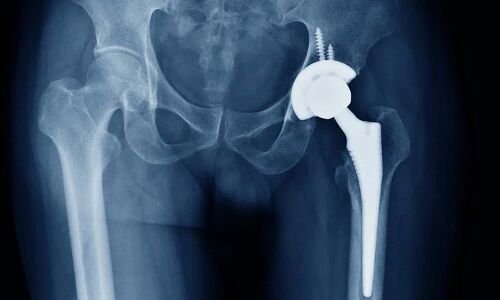
BALTIMORE: According to a study that was published in The Journal of Arthroplasty, there is a substantial risk of periprosthetic joint infection post total hip arthroplasty if there has been less than a one-year interval of quiescence following septic arthritis of the hip.
Each year, 20,000 people are given the diagnosis of septic arthritis, with 15% of those cases especially impacting the hip joint. These circumstances aggravate arthritic changes, frequently necessitating a total hip replacement (THA). These patients are more likely to develop periprosthetic joint infections as a result of their past infection history (PJIs).
The authors aimed to compare a group of THA patients without a history of septic hip to individuals who were diagnosed with septic hip arthritis at intervals (0 to 6, or 6 to 12 months) before an ipsilateral initial THA. They specifically evaluated (1) PJI-related changes from 90 days to 2 years and (2) risk variables for PJI at 2 years.
For this objective, A national, all-payer database was searched to find all patients who underwent a primary THA between 2010 and 2021, and patients who had previously experienced ipsilateral septic hip arthritis were identified (n = 1,052) using codes from the International Classification of Disease and Current Practice Terminology. As a non-septic group comparison, a randomized sample of patients (n = 5000) who had never previously experienced septic arthritis was used. The occurrences of PJI at 90 days through two years were then determined and compared using bivariate chi-square analysis. Multivariate regression models were then used to examine risk factors for post-THA PJIs.
Conclusive highlights of the study:
- At 90 days, a year, and two years (all p <0.0001), the cohorts with septic arthritis were more likely than the non-septic group to need modifications as a result of PJIs.
- In comparison to patients who had diagnoses between 6 and 12 months prior to THA, patients who had septic arthritis diagnoses between 0 and 6 months prior to THA had a higher risk of developing PJI at both one and two years (odds ratio (OR) of 43.1 versus 29.6, p<0.0001 and OR of 38.3 versus 22.1, p<0.0001).
- In comparison to the population without a history of septic hip, diabetes mellitus, obesity, and cigarette use were linked risk factors for PJIs at 2-years in the cohort with a septic hip.
The authors came to the conclusion that, between 0 and 6 months and between 6 and 12 months, respectively, a shorter than 1-year quiescent period following septic arthritis is linked with a 38- and 22-fold greater risk for post-THA PJI, respectively. Although the risks are lower for patients who undergo THA more than 6 months after their septic arthritis treatment than for those who do so between 0 and 6 months after treatment, they are still substantial.
Orthopaedic surgeons should be mindful of the elevated risks of PJIs when considering a THA in patients with a history of septic arthritis.
REFERENCE
Jeremy A. Dubin et.al., Less than 1-year quiescent period after septic arthritis of the hip is associated with high risk of periprosthetic joint infection following total hip arthroplasty.
November 24, 2022DOI:
https://doi.org/10.1016/j.arth.2022.11.004
